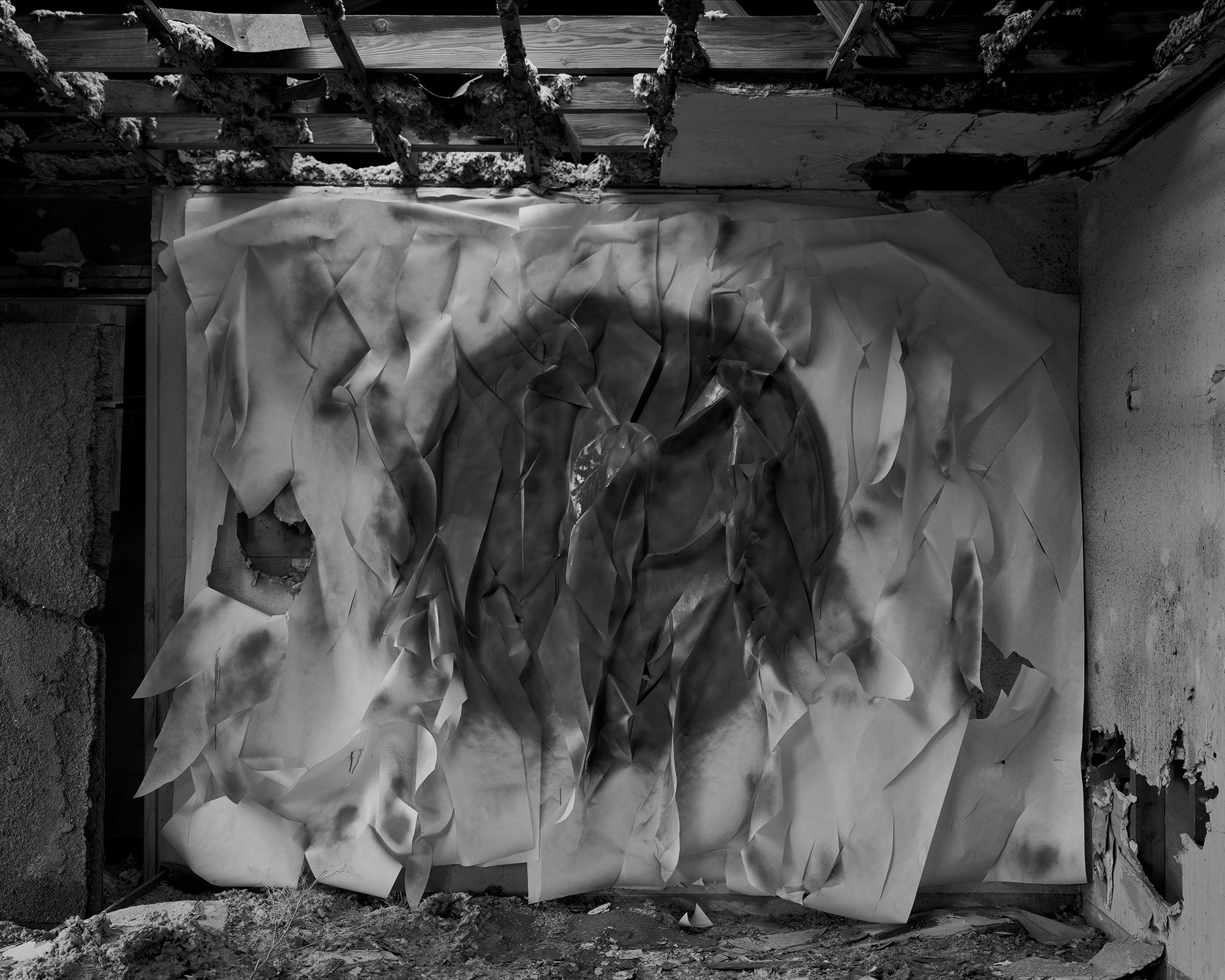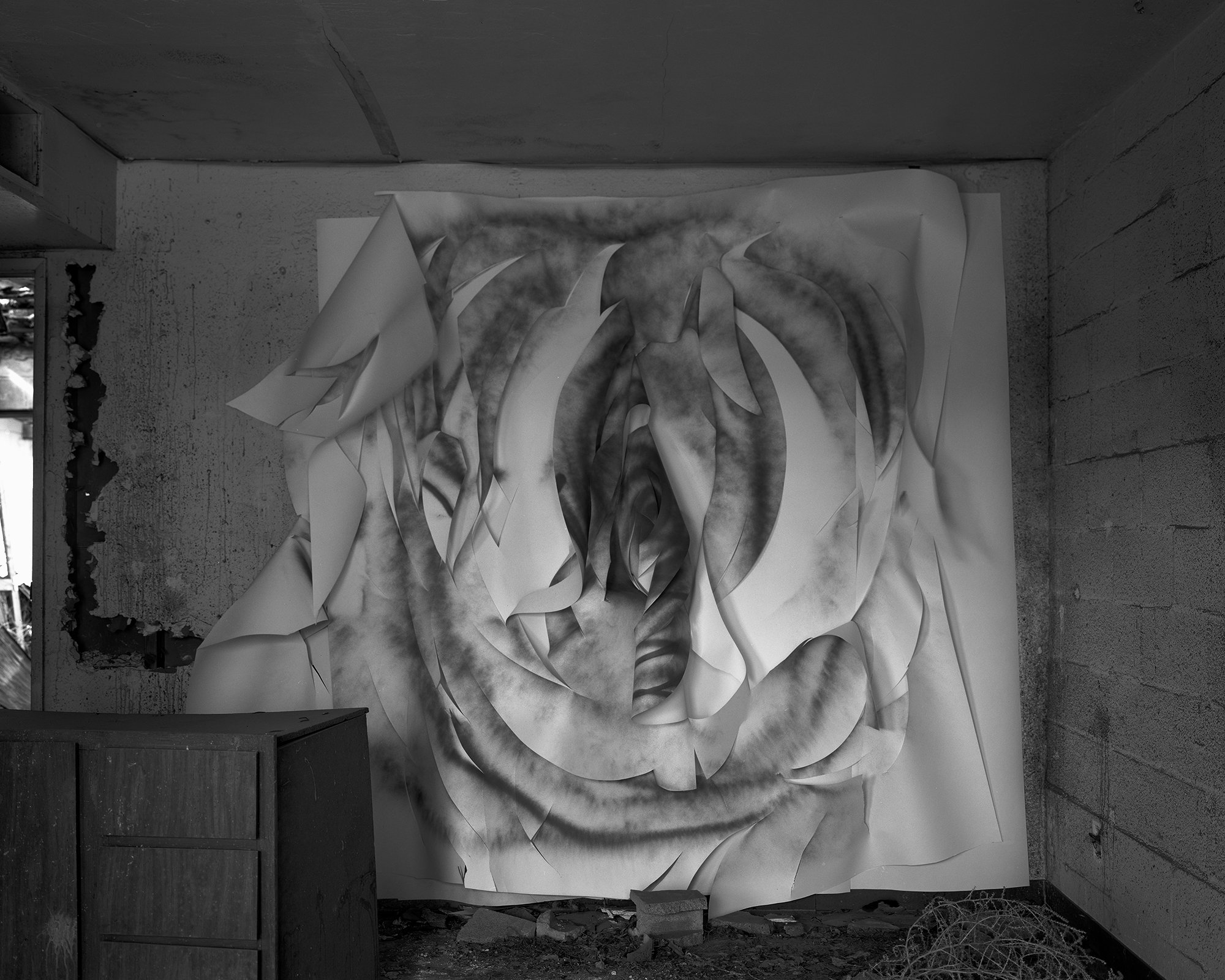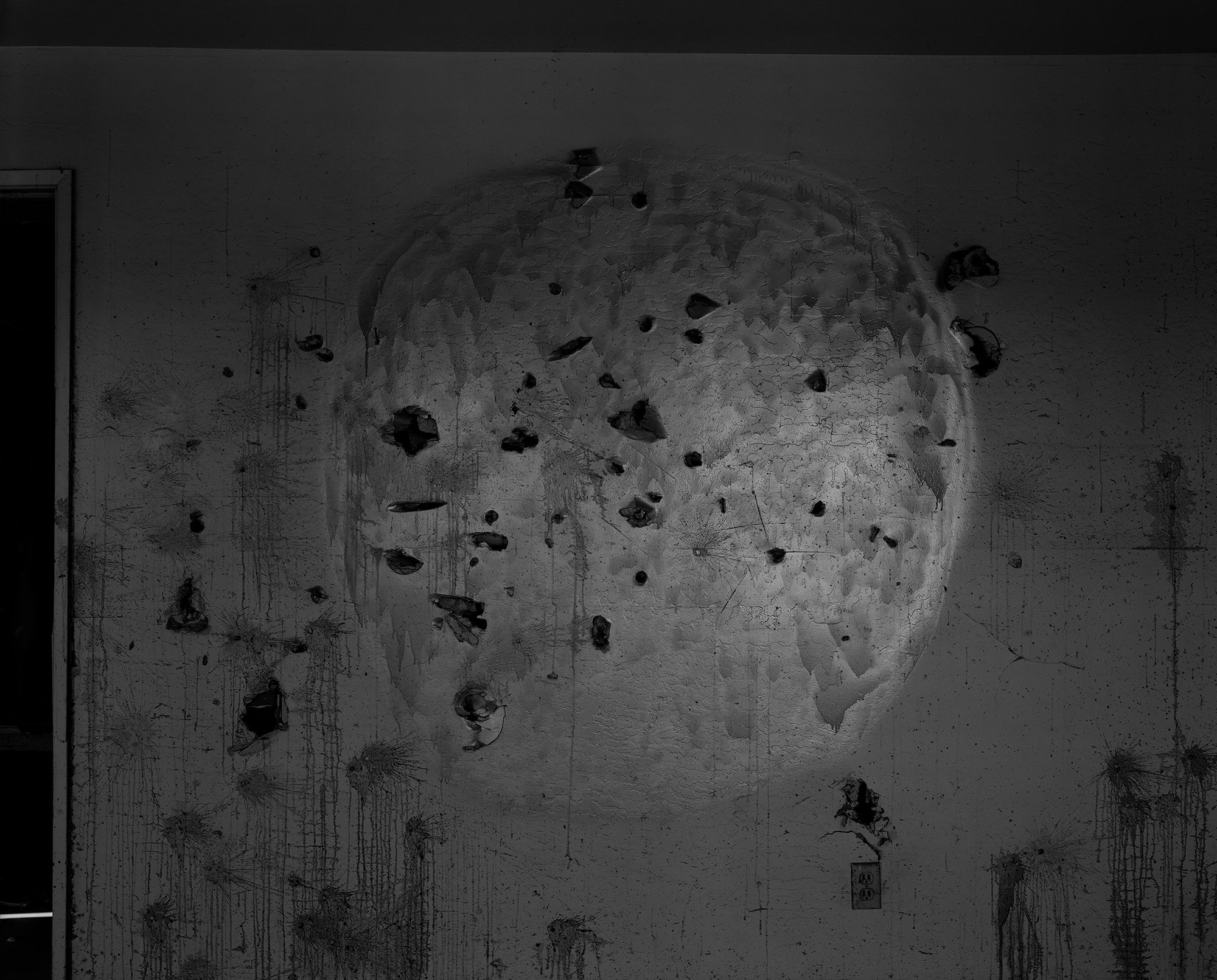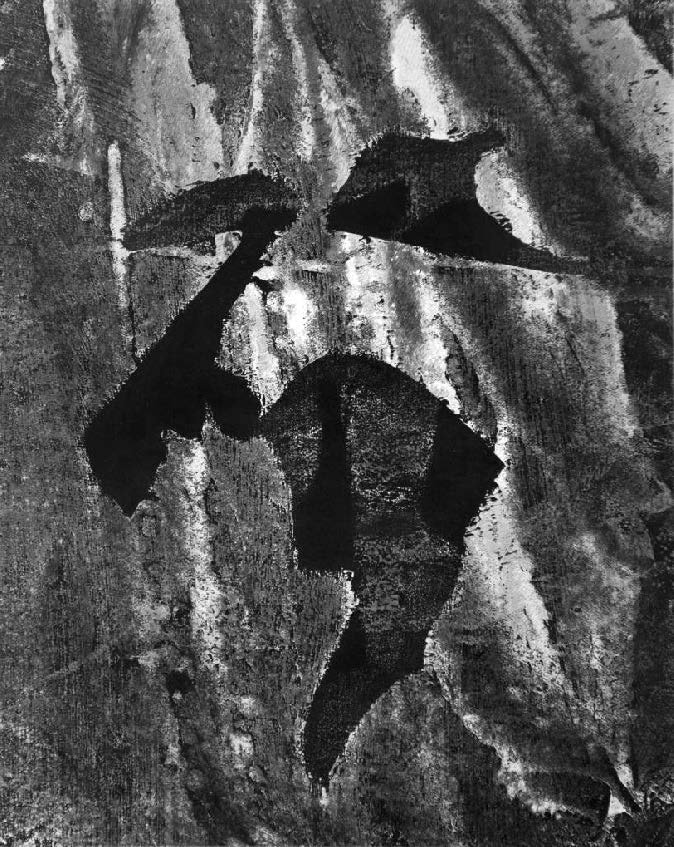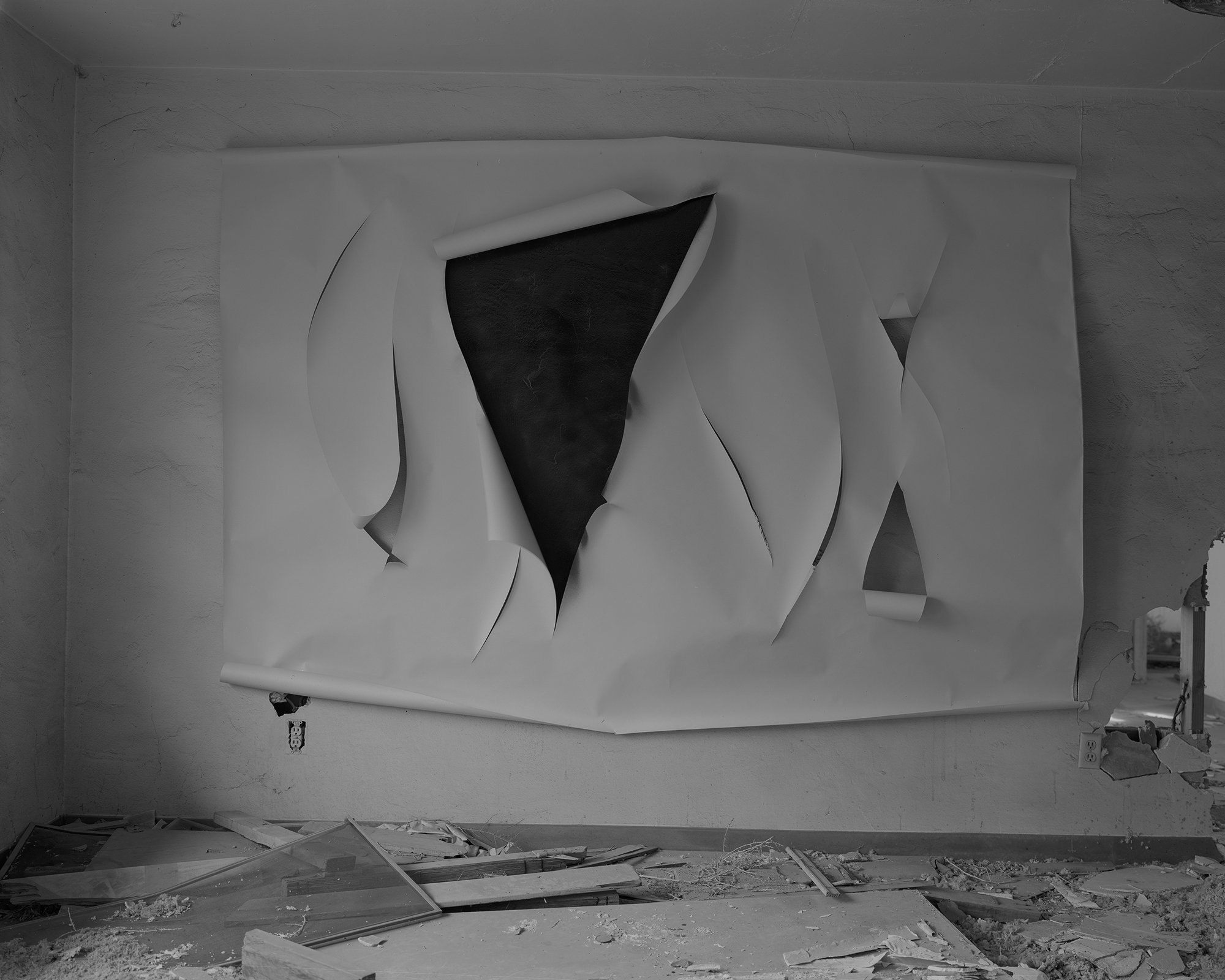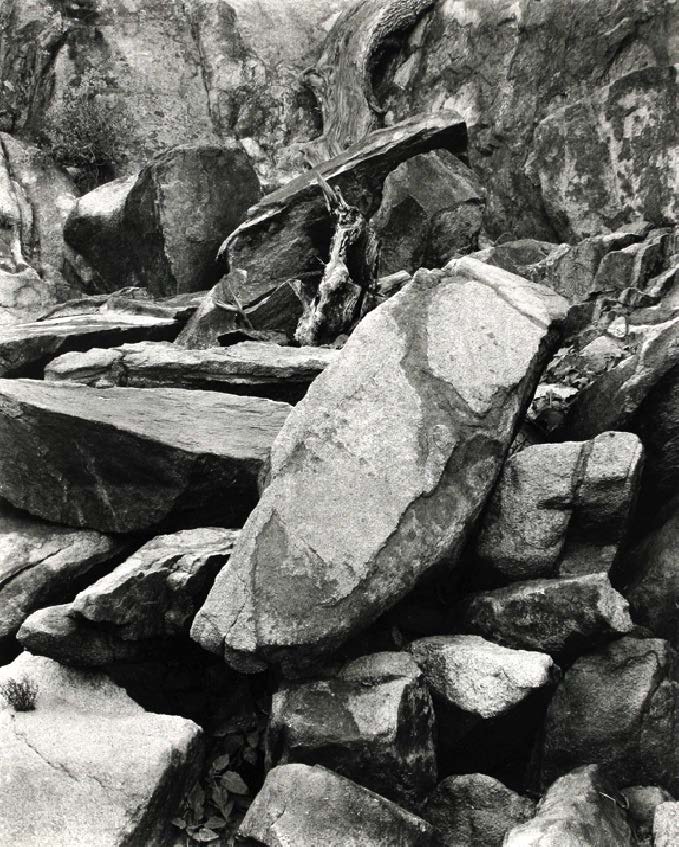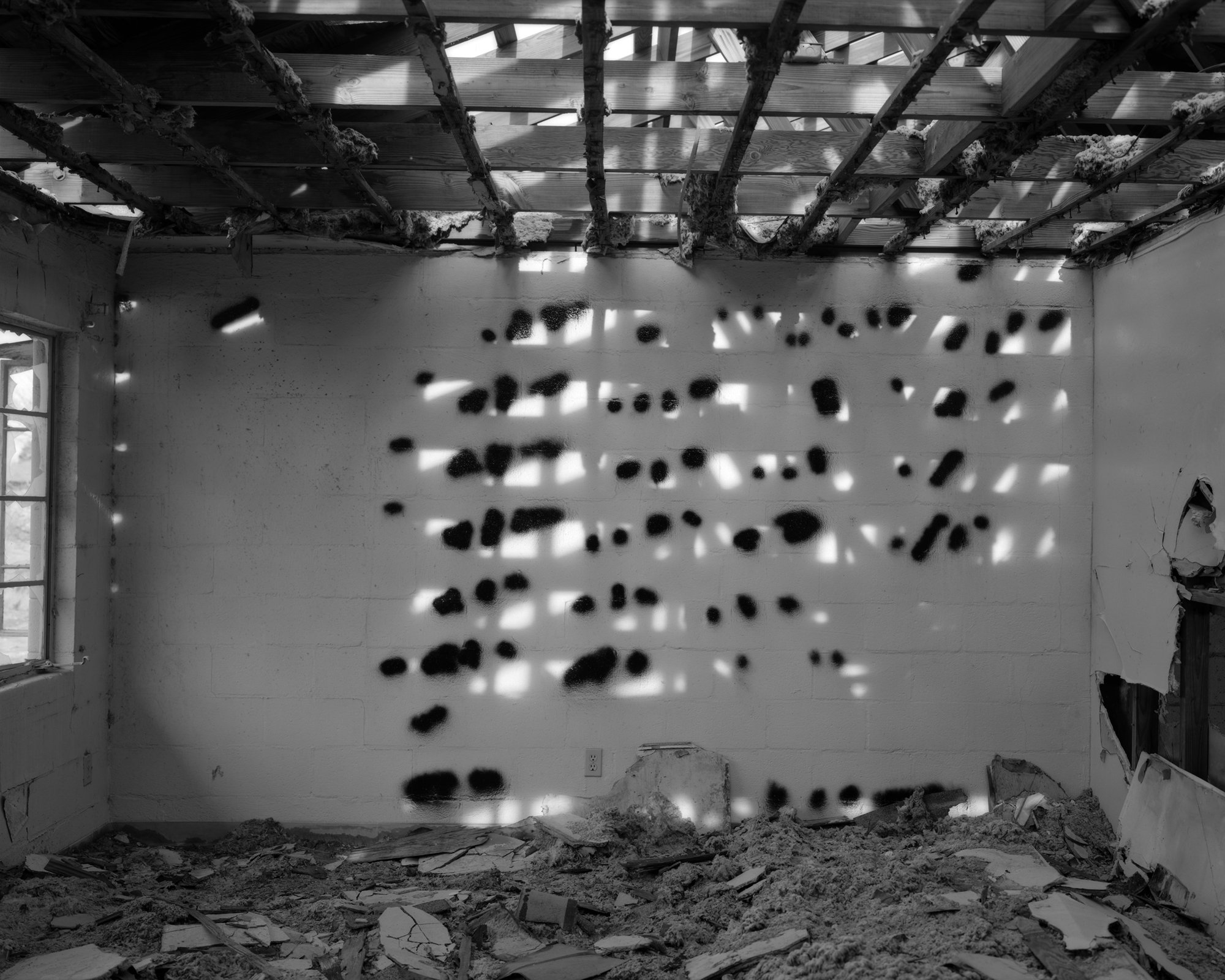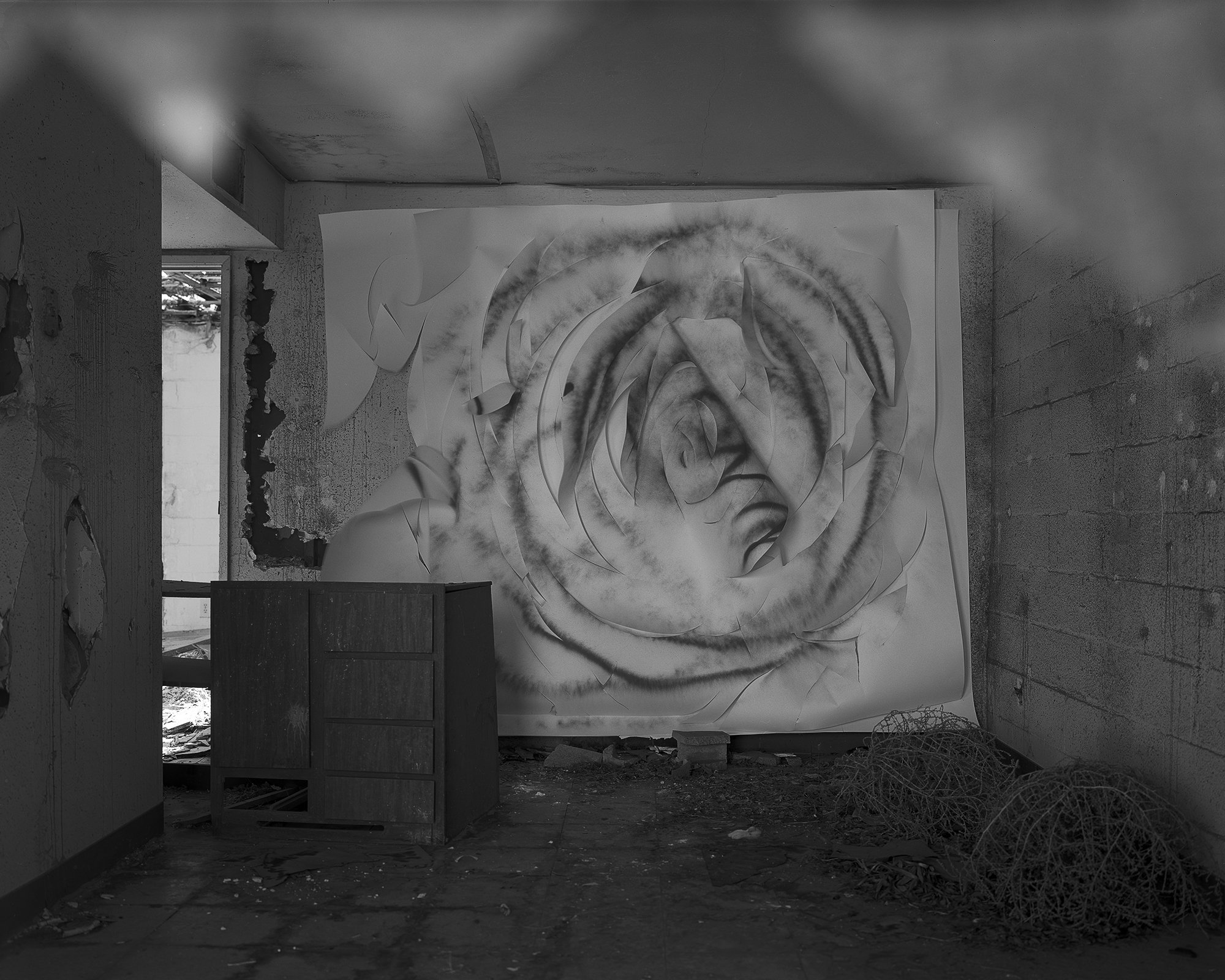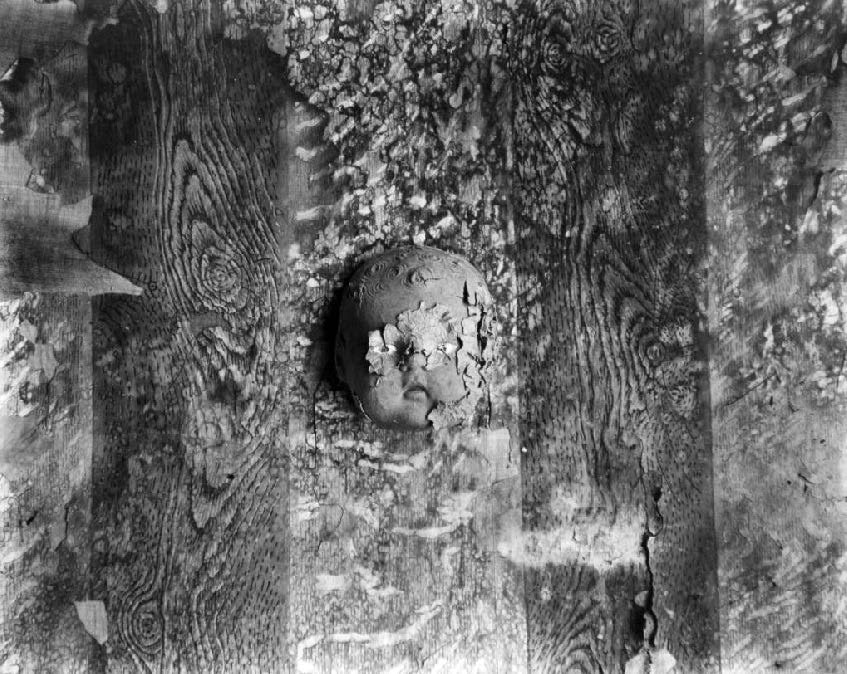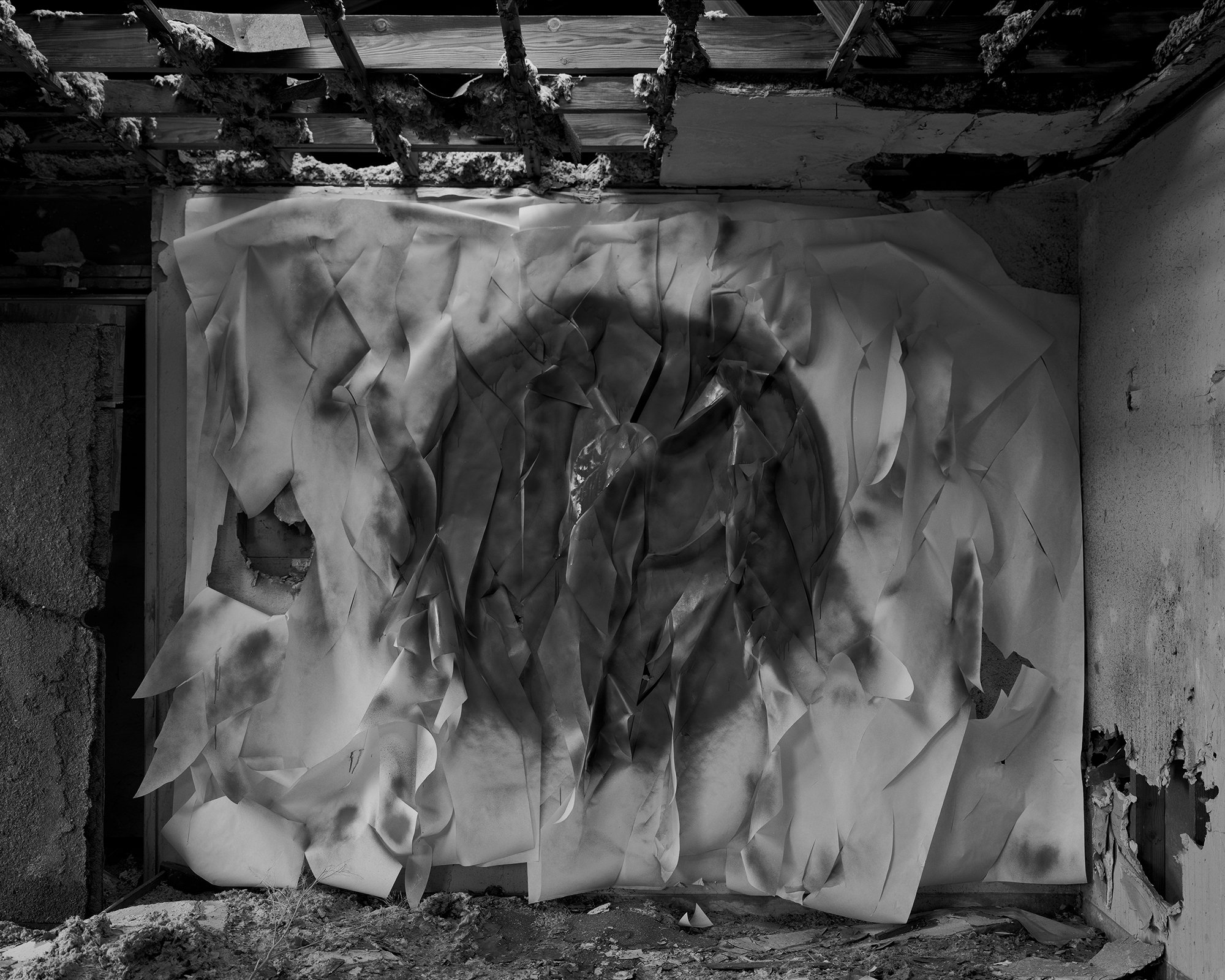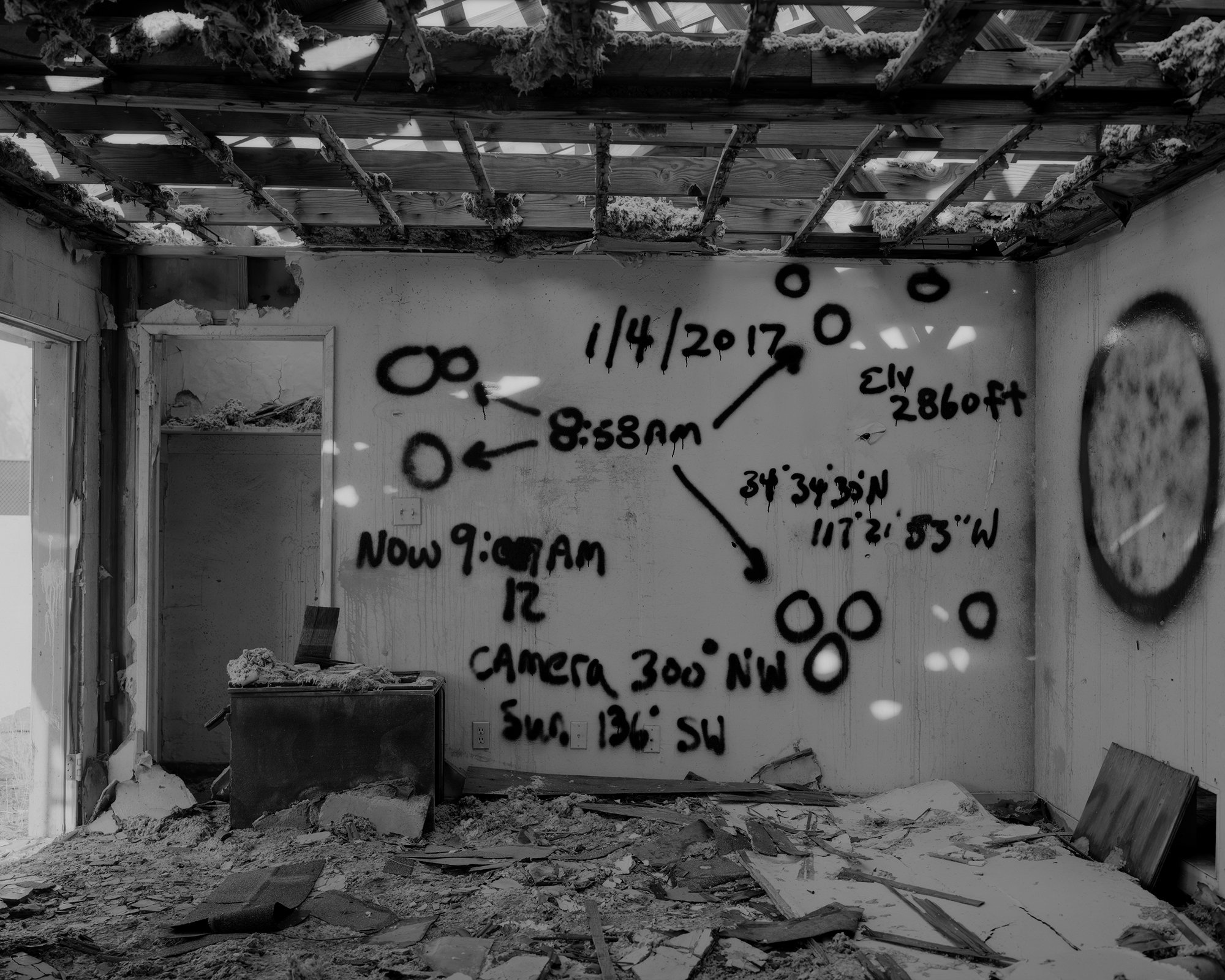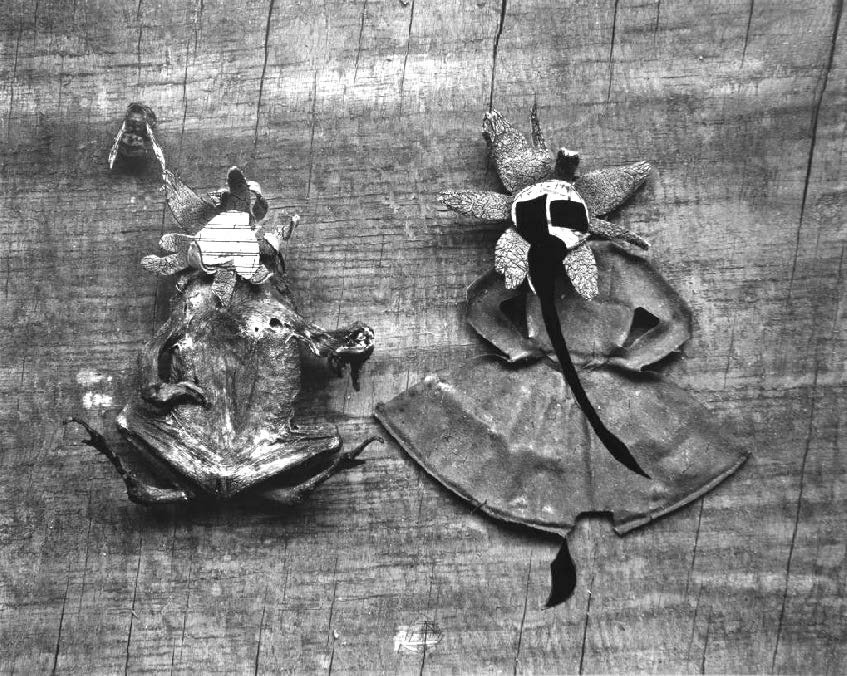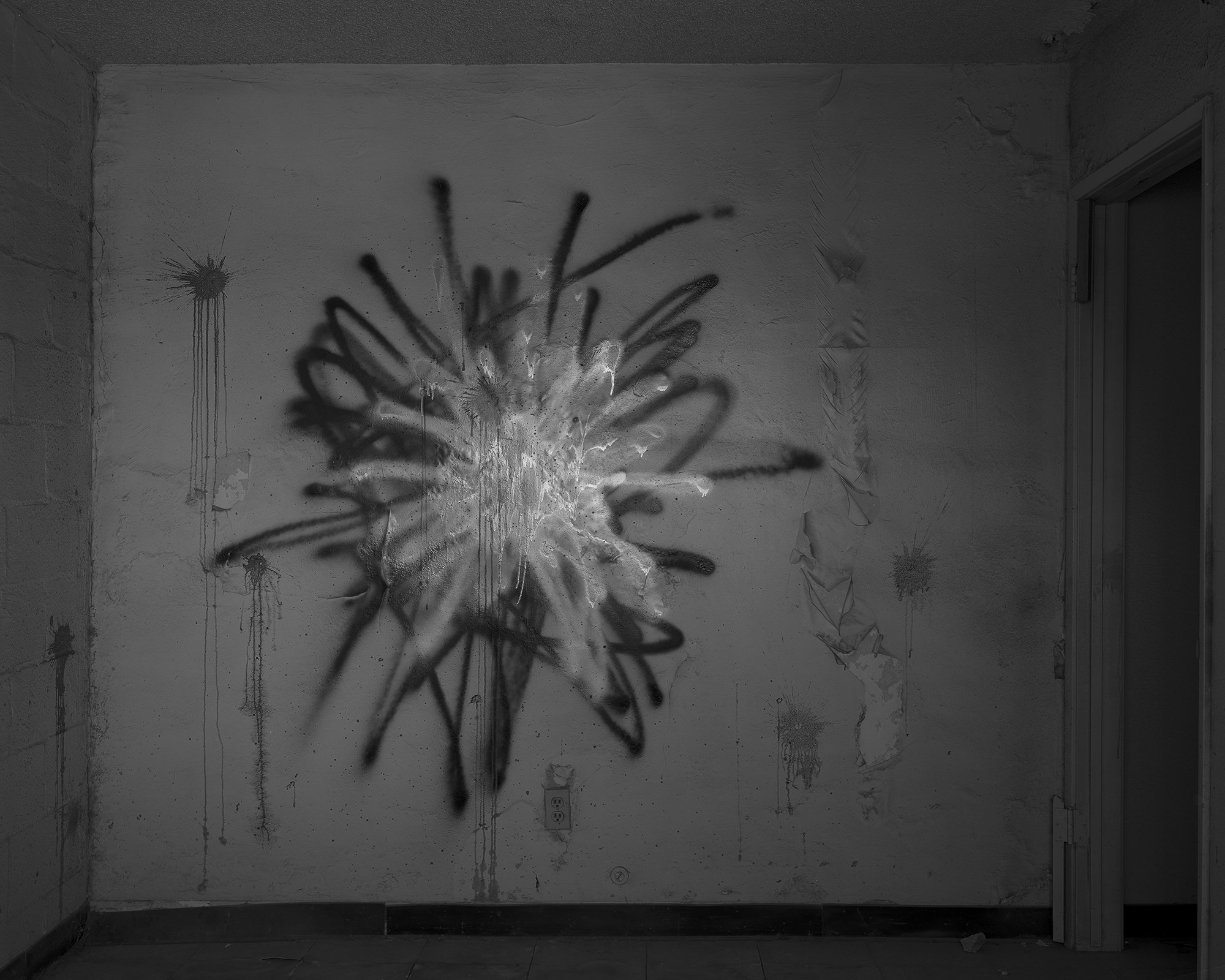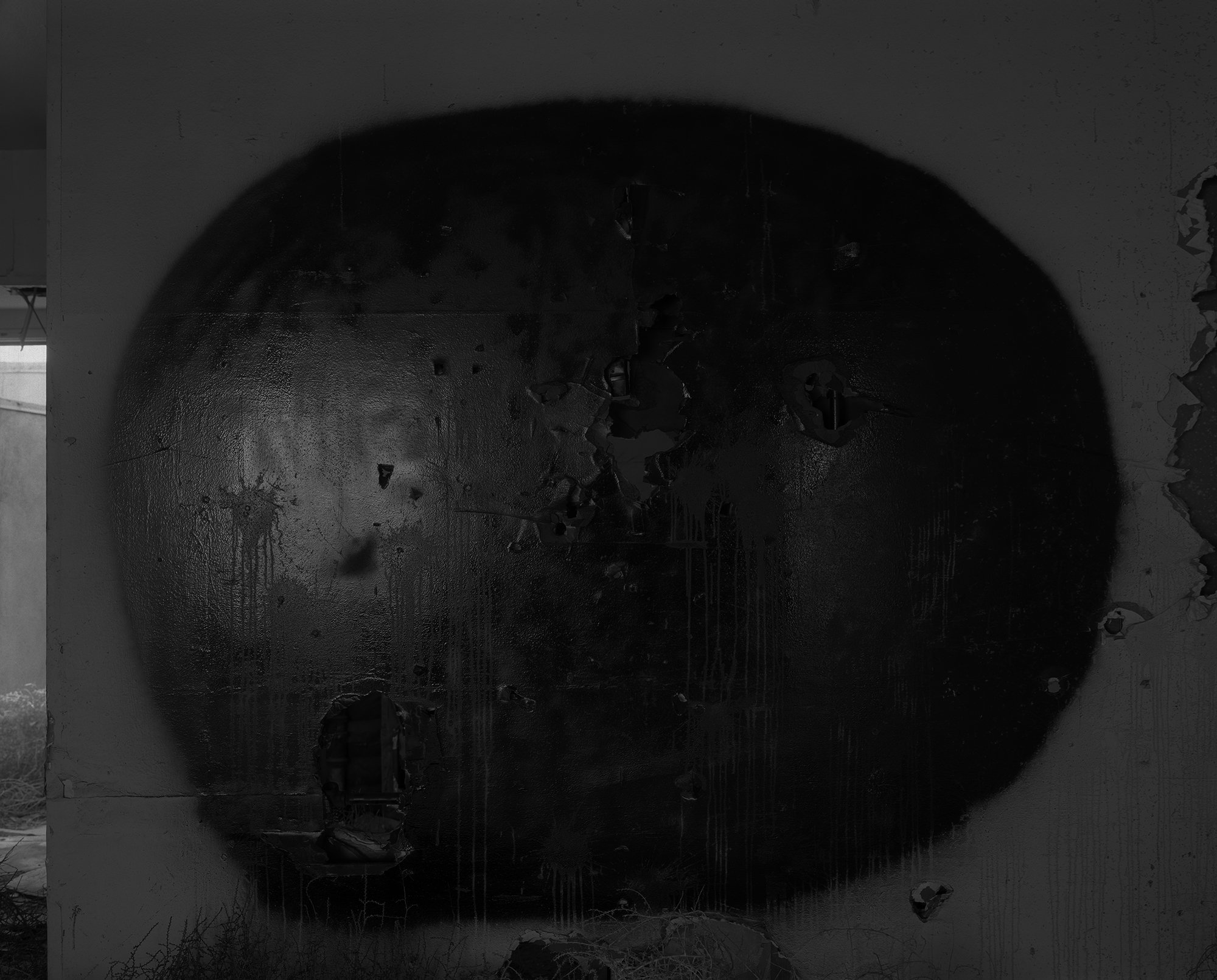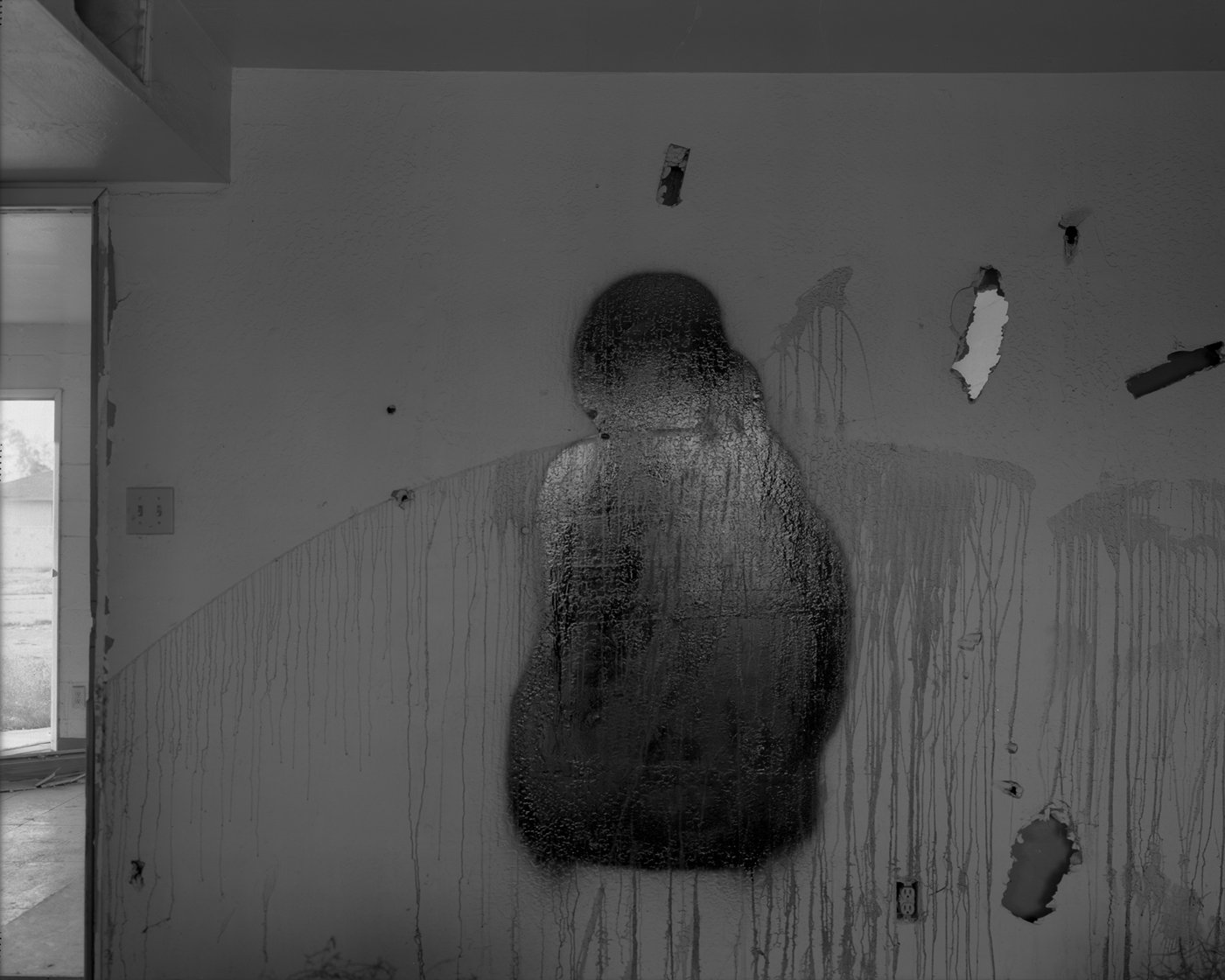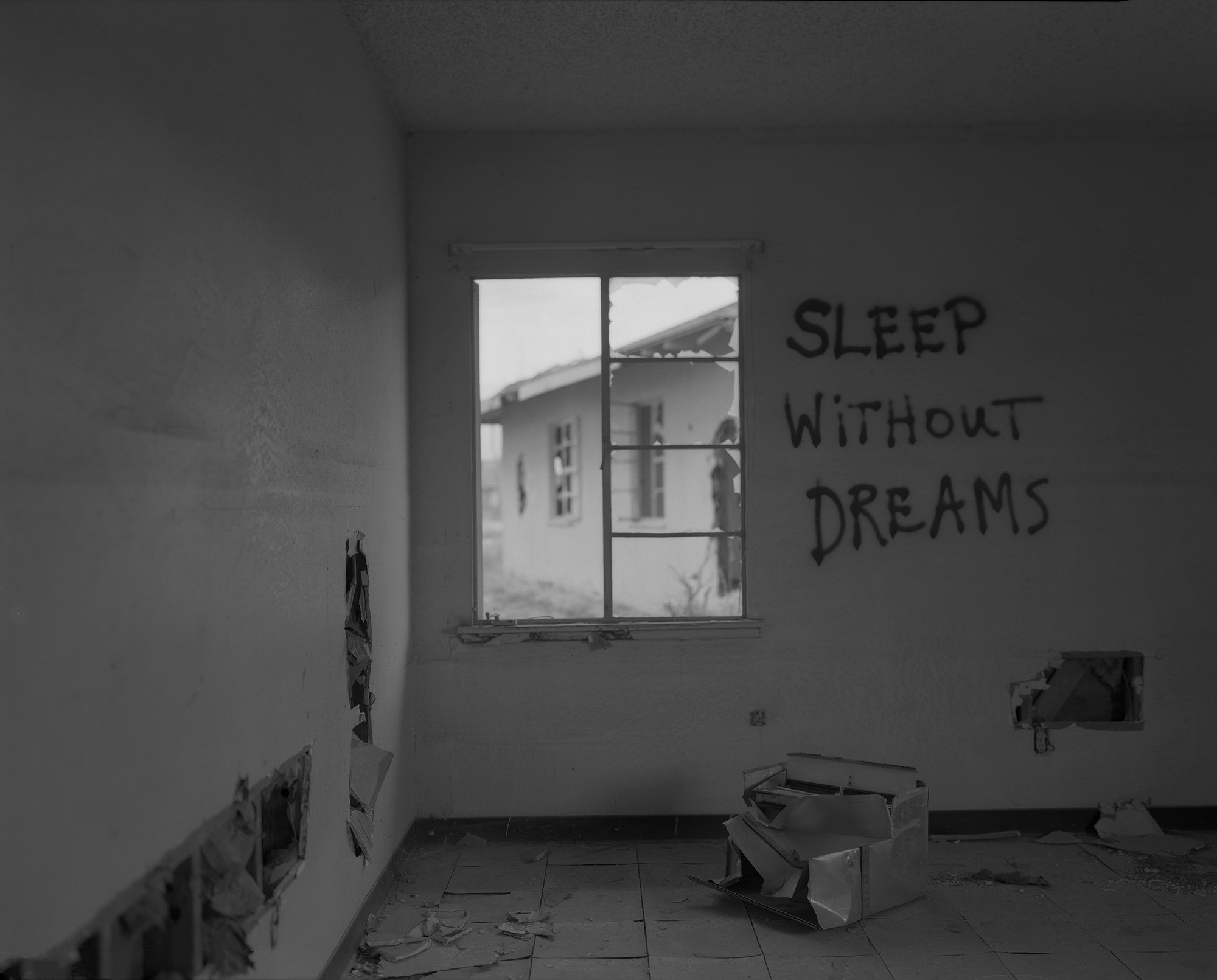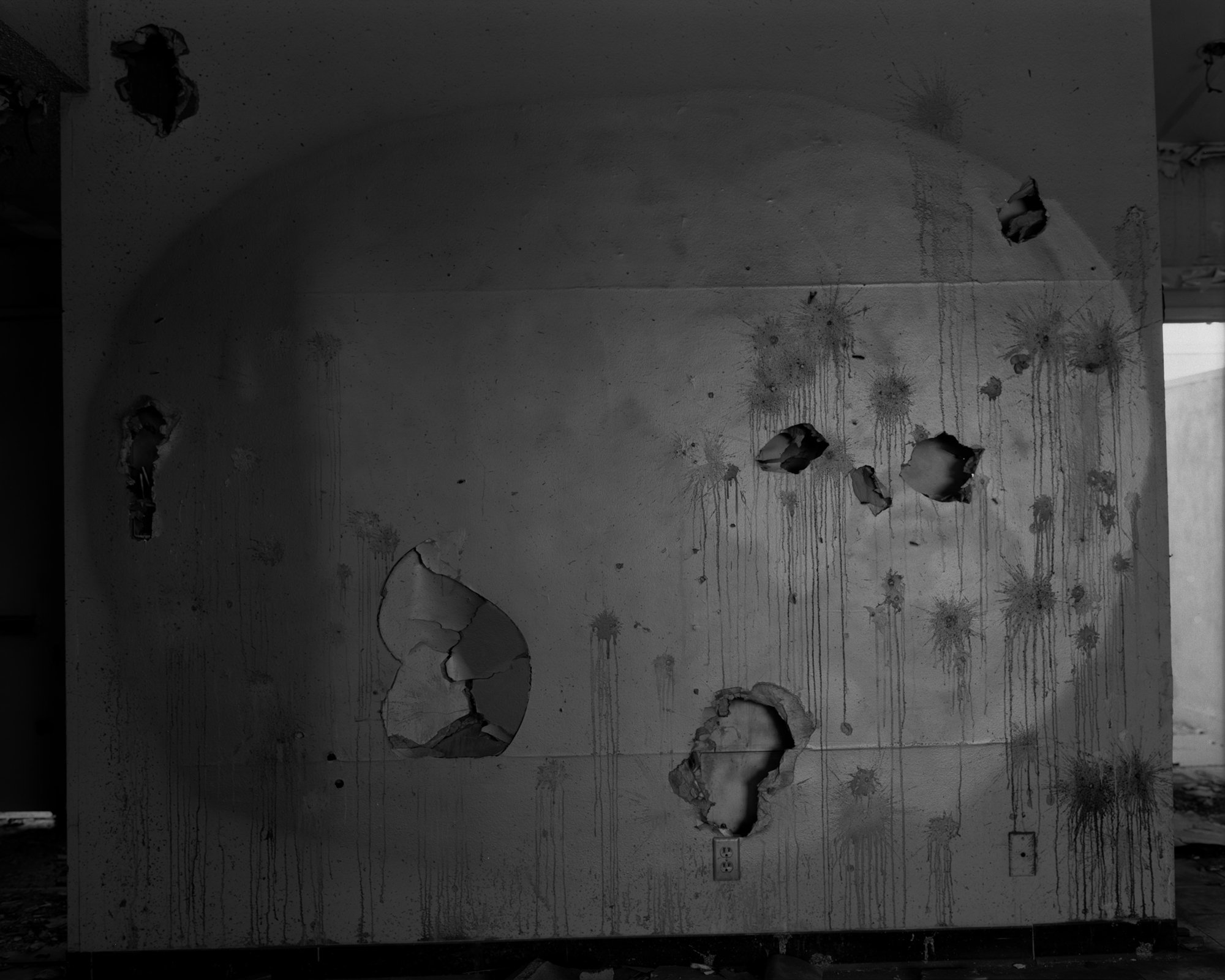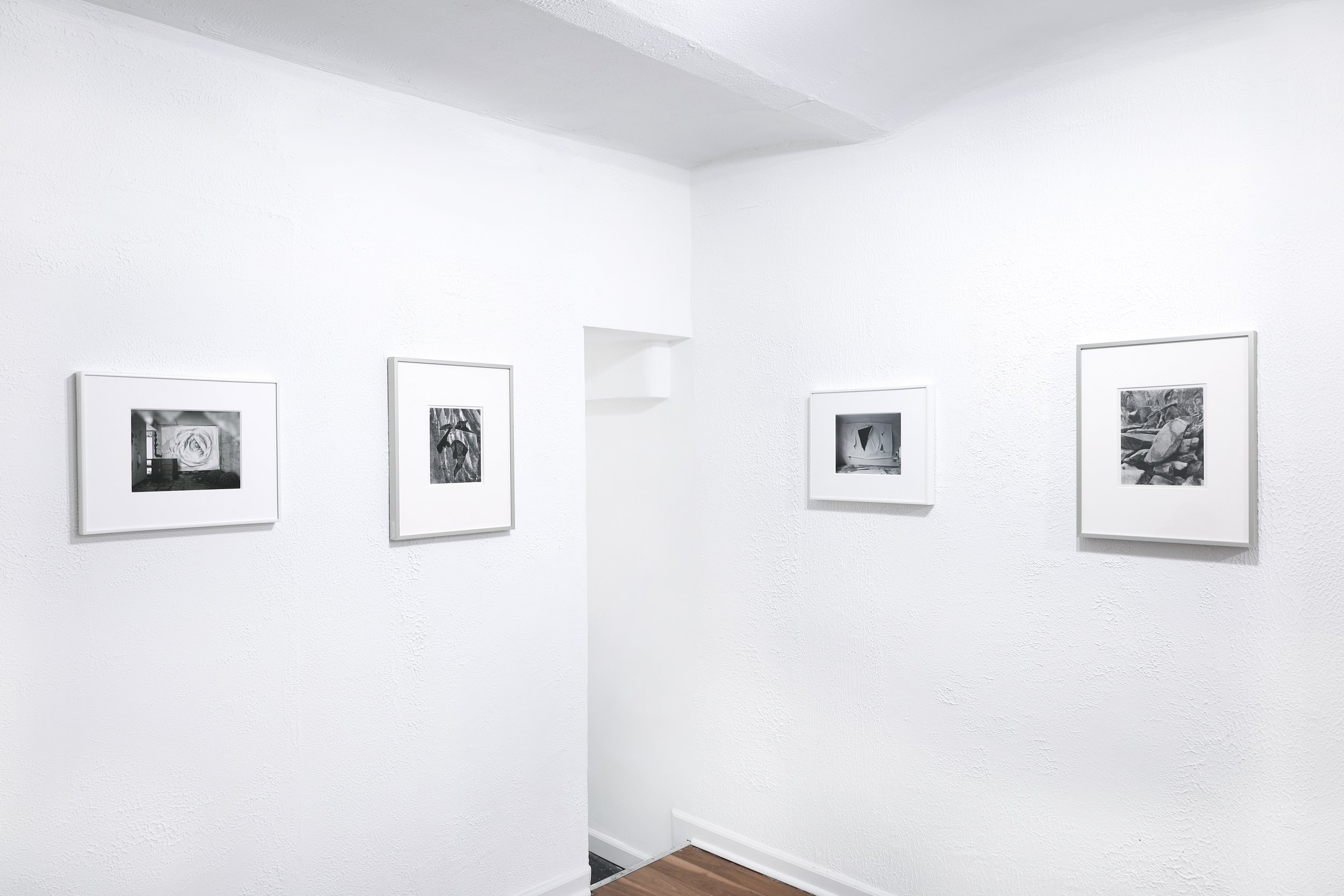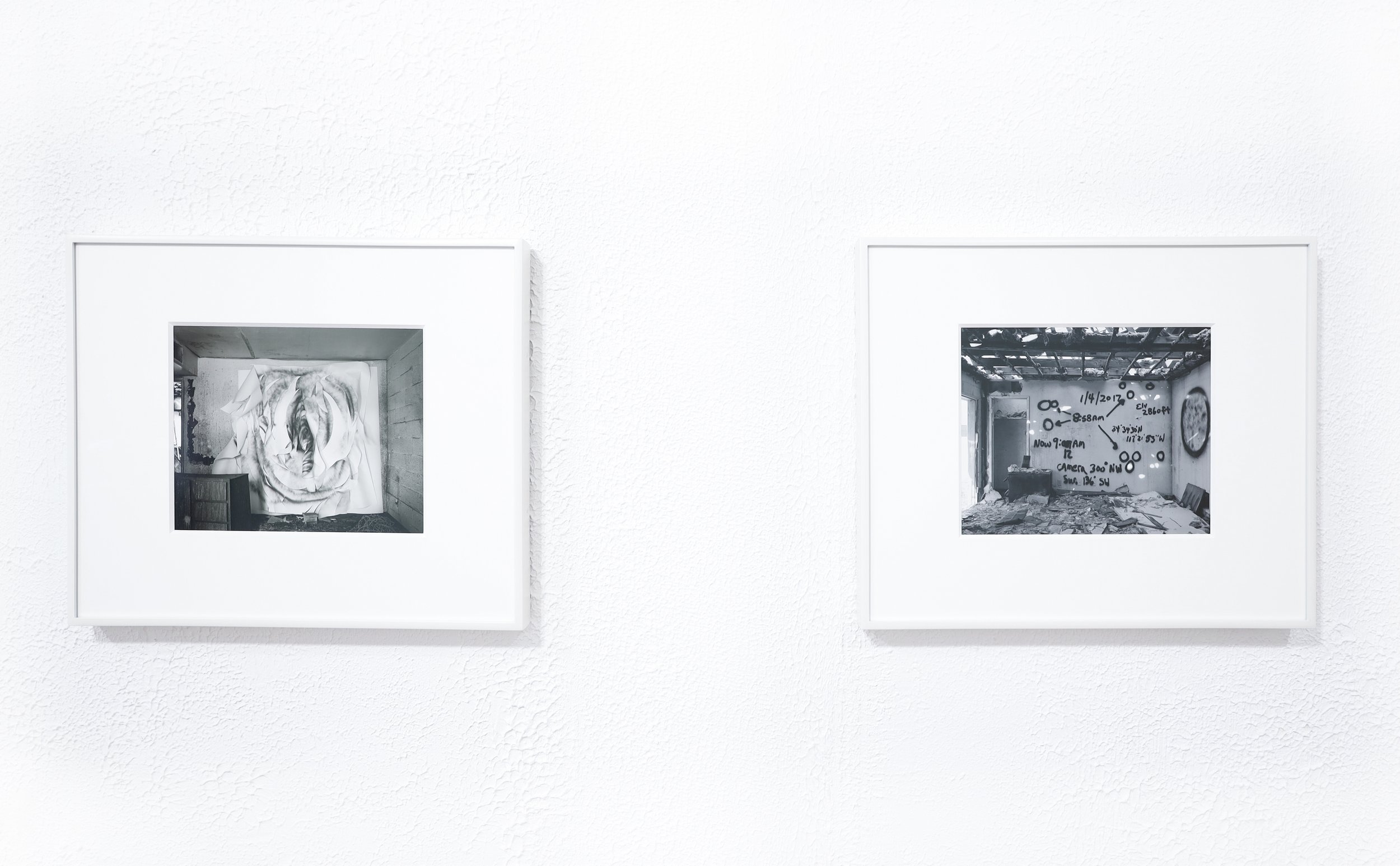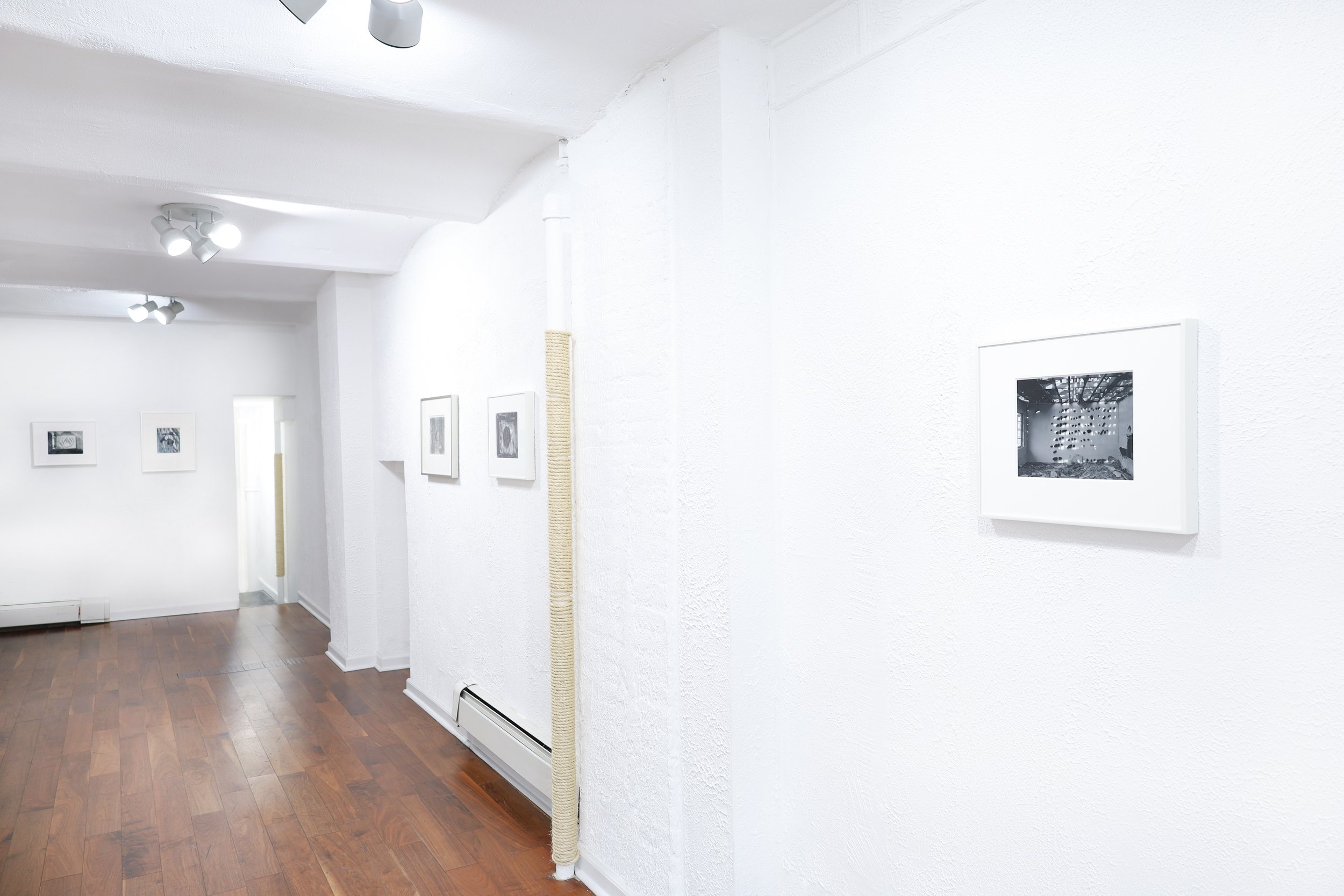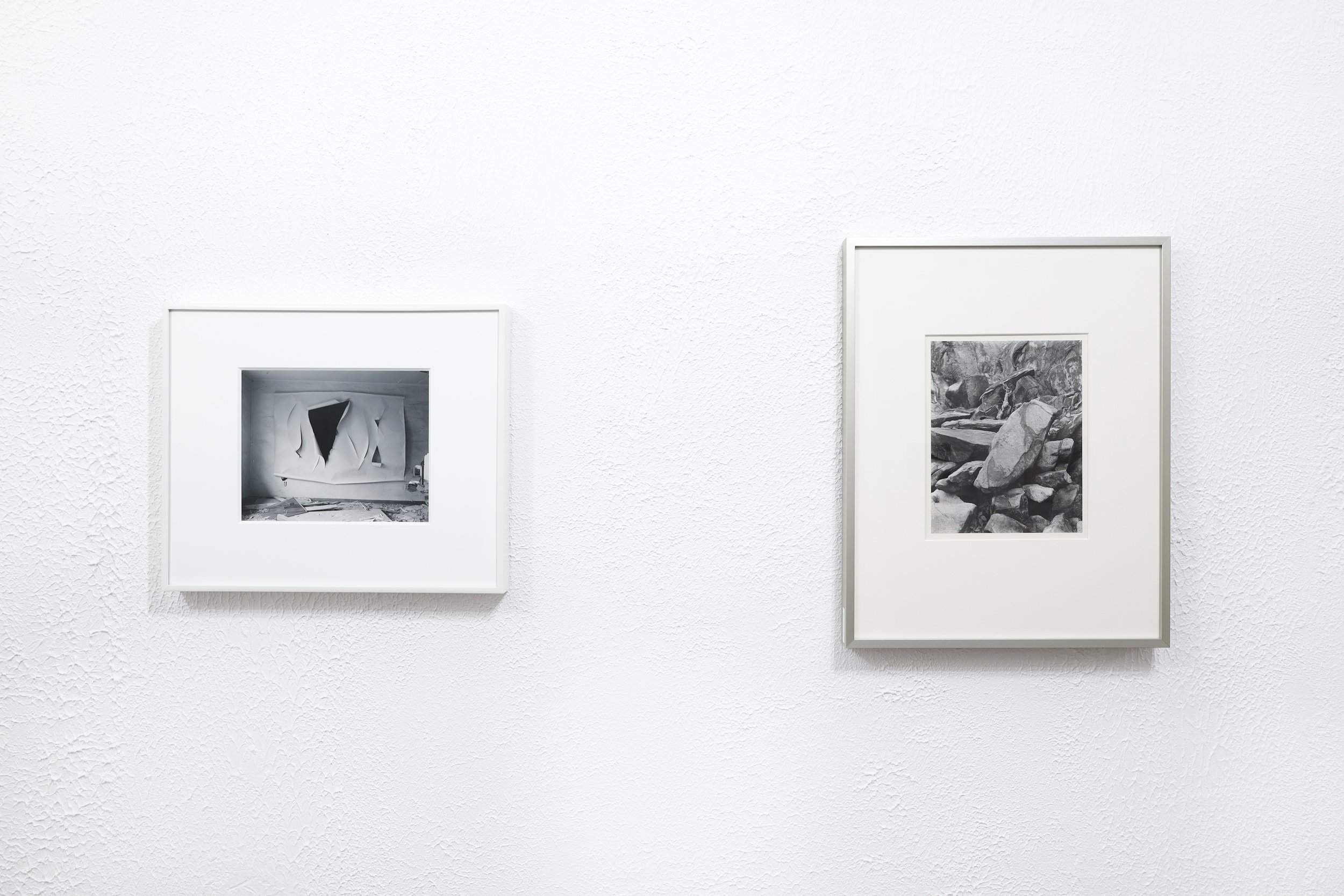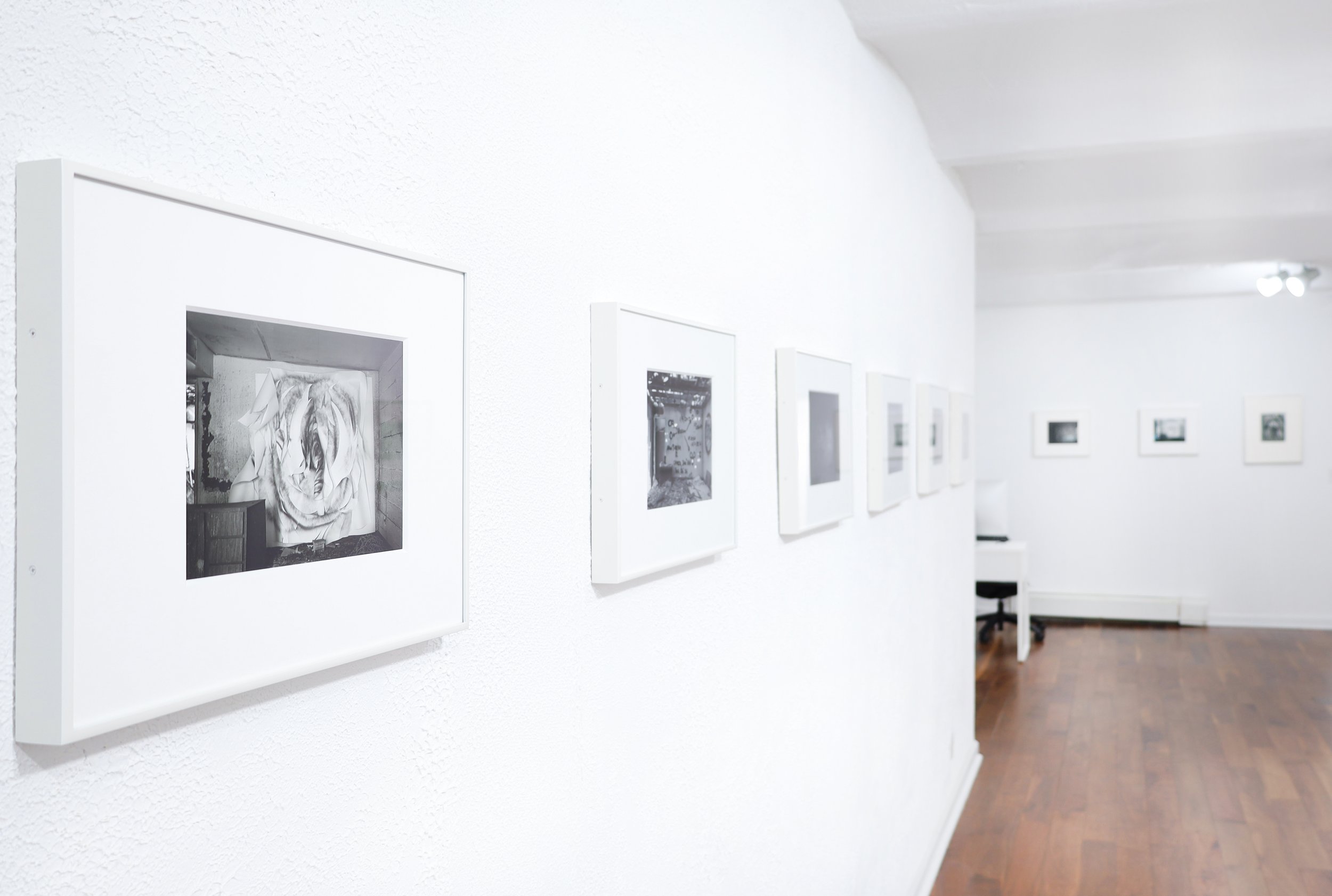John Divola: Frederick Sommer
January 6 – February 19, 2022
Artworks
Installation Views
Press Release
Heroes Gallery is pleased to present previously unexhibited work by contemporary photographer John Divola in conversation with the work of 1940s surrealist photographer Frederick Sommer (1905-1999). Divola considers Sommer to be a fore-bearer due to his eclectic approach to image making, the materiality of his prints and the painterly abstraction in his 8x10 photographs of debris, animal carcasses and lonely, horizonless landscapes.
Both Divola and Sommer create photographs that embody their physical, intellectual, technological, and experiential engagement with the world, becoming artifacts of a particular time and place. Sommer was prolific during the turbulent 1940s but rather than commenting directly on the aftershock of the Great Depression and WWII, he produced stunning images of detritus and the desolate scenery of the Southwest. These compositions engaged the frenetic “allover” paintings of Abstract Expressionism and the uncanny dream-like compositions of Surrealism. Three of the works featured in this exhibition were previously owned by friend and painter Max Ernst who inspired Sommer’s interest in Surrealism and abstraction as a formal response to the horrors of war.
Divola similarly engages with the conceptual underpinnings of abstraction by subtly manipulating abandoned buildings and photographing the results. Highlighted in this exhibition are twelve 8x10 silver chloride contact prints from Divola’s “George Air Force Base, Daybreak” series, each taken on an abandoned air force housing complex in Victorville, California and are exposed at, or shortly after, sunrise, once the artist had performed some manner of intervention in the space. Other series, or “archives” as the artist calls them, within the George Air Force Base project include Dead Mirrors, Survey, Blue with Exceptions, Enso: 36 Right-Handed Circumference Gestures, Terminus, Voyager and a yet to be titled collection of Gigapan photographs.
Divola came across the high desert military complex in 2015. Declared a Superfund Site in 1990 and abandoned in 1992, the buildings have been gutted for recyclable copper piping, vandalized by teenagers and co-opted for paintball war games. Each of these interventions layer onto the building’s surfaces and add texture to Divola’s formal compositions. His own modifications are yet another layer, a meditative response to the shapes and tones of the abandoned spaces.
Not all of these layers are strictly formal though, there is of course the cultural envelope surrounding the military industrial machine, the environmental disaster of the site, California’s ever-evolving identity and the evidence of past aggression seen in the hacked open walls and paint splattered surfaces. But like Sommer, Divola chooses not to comment directly on these underlying issues of unease, instead he subtly brings together charged cultural signifiers with layers of soft morning light, the baroque curl of cut paper, and the weight of his spray-painted orbs. Each photograph documents Divola’s skillful orchestration of these formal layers and the psychic echoes of the air force base into a single image.
Both Sommer and Divola are loners, working during two very different times and in two very different locations that contain compelling social histories. The thing that brings them together is their unique ability to photograph material history rather than directly critique the social and political turmoil of their time. Through these observations, they each create provocative images that manifest complicated emotions of fear, isolation, and beauty.
John Divola received a BA from California State University, Northridge in 1971 and completed his MFA from University of California, Los Angeles in 1974. His career spans four decades and emphasizes the separation of image and reality. His work has been the subject of international exhibitions, most recently at Los Angeles County Museum of Art; Santa Barbara Museum of Art; Joslyn Art Museum, Omaha; Kunstverein Freiburg. His photographs are part of collections including but not limited to the J.Paul Getty Museum, Los Angeles; Museum of Modern Art, New York; Fotomuseum Winterthur; and Victoria and Albert Museum, London. He is represented by Office Baroque in Brussels, Gallery Luisotti in Santa Monica and Yancey Richardson in New York.
Portrait of Frederick Sommer by Edward Weston, 1944. © 1981 Arizona Board of Regents, Center for Creative Photography. Courtesy of the J. Paul Getty Museum.
Frederick Sommer (1905-1999) was a true polymath, producing significant bodies of photography, drawing, collage, musical composition and theoretical writing in his lifetime.
Sommer engaged with the world formally. His photographs depict a range of interests from macabre arrangements of animal carcasses to flattened, horizonless landscapes. Photographing his experiences within the natural world, Sommer was deeply influenced by his relationship with surrealist and abstract expressionist principles. His transition from finding things to photograph to creating things to put before the camera became fundamental to present day conversations in contemporary photography.
Frederick Sommer was born in Angri, Italy and raised in Brazil. He earned a M.A. degree in Landscape Architecture from Cornell University where he met Frances Elizabeth Watson whom he married in 1928. In 1931 he was diagnosed with tuberculosis and after briefly recuperating in Europe, he moved to Tucson, Arizona and then permanently to Prescott, Arizona where he could benefit from the temperate and dry climate.
Fluent in five languages, Sommer read voraciously on modern art and aesthetics. Through correspondence and travel, he aligned himself with great artists of the period including Edward Weston, Aaron Siskind, Alfred Stieglitz and formed a lifelong friendship with Max Ernst. Sommer bought a large-format camera and started photographing landscapes around 1939. Like the 'all-over' field paintings of American Abstract Expressionist artists, his desolate and bleached landscapes speak of existential unease in the wake of WWII. In 1946 Sommer began to photograph composed arrangements of found objects, a product of his engagement with the ideas and practices of Surrealism. His textures, layered negatives and desiccated animals whisper the uneasy language of the unconscious and dreams.
His works have been exhibited by institutions including the J. Paul Getty Museum, Los Angeles; Delaware Art Museum; Philadelphia College of Art; Washington Gallery of Modern Art, Washington D.C.; Pasadena Art Museum, California; Museum of Modern Art, New York; Institute of Design, Chicago; and the Los Angeles County Museum of Art.
Work by the artist is represented in major museum collections such as the Metropolitan Museum of Art, New York; Smithsonian Institution, Washington D.C.; Art Institute of Chicago; Museum of Modern Art, New York; Los Angeles County Museum of Art; Museum of Fine Arts, Boston; National Gallery of Art, Washington D.C.; and the Victoria and Albert Museum, London.
